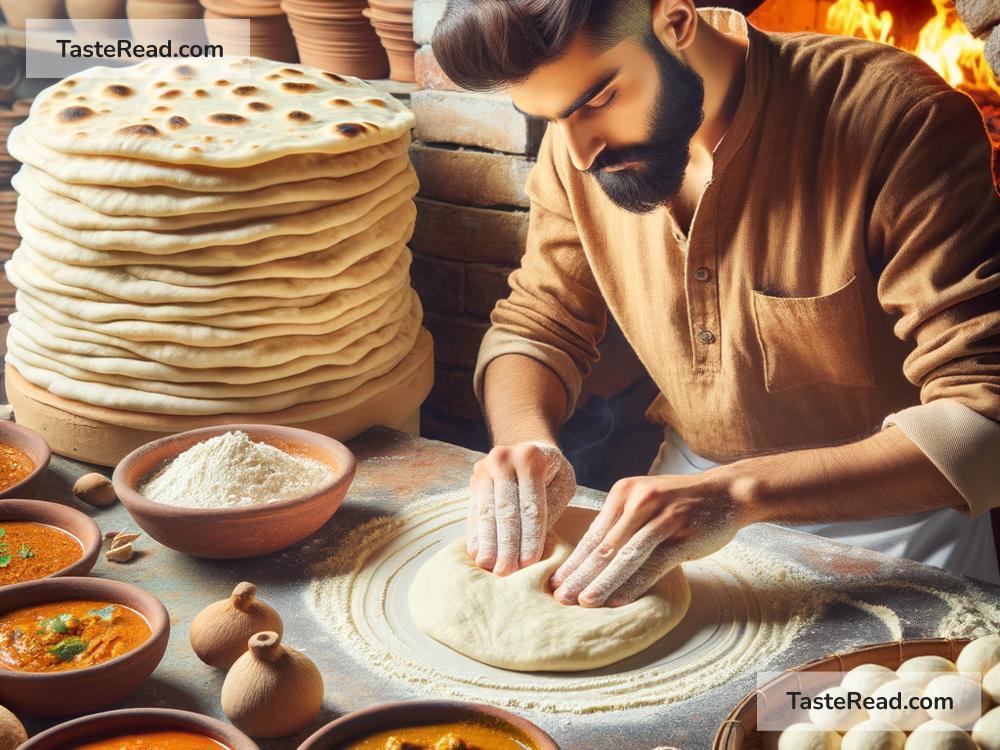The Cultural Significance of the Indian Naan
India is a land of diverse cultures, traditions, and cuisines. From spicy curries to mouthwatering sweets, Indian food is loved worldwide for its rich flavors and variety. One iconic part of Indian cuisine that stands out is the naan—a soft, fluffy, and flavorful bread. The naan is much more than just a type of flatbread; it is a cultural symbol, a testament to history, and a delicious center piece of Indian meals. Let us explore the significance of naan in Indian culture and how it has captured the hearts (and stomachs) of people around the world.
What is Naan?
Naan is a type of leavened flatbread traditionally made with wheat flour, water, yogurt, and yeast or baking soda. It is often brushed with butter or ghee after cooking, giving it a rich flavor. The dough is rolled out and cooked in a tandoor—a cylindrical clay oven that gives the naan its unique texture and slightly smoky taste. Because of this, naan is soft and slightly chewy, with a golden-brown surface that’s irresistible.
While naan has its roots in India, it is also popular in many other South and Central Asian countries, including Pakistan, Afghanistan, and Iran. Over time, naan has become synonymous with Indian food and is now a favorite around the globe.
Roots in Royalty: Naan’s Historical Significance
The history of naan dates back centuries, with some reports suggesting that it was introduced to India during the Mughal era. The Mughals, known for their love of fine dining, brought influences from Persia and Central Asia into Indian cuisine. Naan is believed to have evolved from Persian bread recipes that adapted to Indian cooking methods and ingredients.
In Mughal culture, naan was considered luxurious and was often served to royalty and high-ranking officials during feasts. It was typically eaten with rich meat dishes, like kebabs, or elaborate curries that showcased the wealth and sophistication of the empire. The naan quickly became a symbol of celebration, opulence, and hospitality.
A Culinary Companion: Naan and Indian Meals
In contemporary Indian cuisine, naan holds its rightful place as the quintessential companion to a variety of dishes. Whether you’re pairing it with buttery chicken curry or scooping up spicy lentils (dal), naan adds a satisfying texture and subtle flavor to every bite. It often replaces rice as the starch in meals, making it a versatile staple for nearly every type of dish.
Naan comes in many variations, catering to different tastes and preferences. Garlic naan, stuffed naan (such as paneer or potato-stuffed varieties), butter naan, or even sweeter versions like peshawari naan—stuffed with dried fruits and nuts—are just a few popular choices. These variations allow people to enjoy naan in unique ways, making it suitable for everything from family dinners to festive occasions.
Cultural Symbolism: Connection to Community and Tradition
Naan is more than just a food item; it carries deep cultural significance. In Indian households, meals are often a communal experience, bringing families and friends together. Naan plays a central role in this shared experience, as it is often broken apart and passed around the table. Offering someone freshly baked naan is a gesture of kindness and warmth, symbolizing hospitality and care.
In Indian restaurants, too, naan serves a similar purpose—it reflects the welcoming nature of Indian culture, inviting people to sit down and enjoy a hearty meal. For many, naan evokes memories of home and tradition, reminding them of the importance of food in fostering connections and celebrating life’s moments.
Naan’s Impact Worldwide
As Indian cuisine has gained global popularity, naan has made its way into kitchens and restaurants across the world. Its easy adaptability and delicious taste have made it a favorite in fusion dishes as well. Today, naan can be found in everything from wraps and pizzas to creative recipes like naan tacos, showing how one humble bread can transcend cultures and boundaries.
Indian restaurants in foreign countries often serve naan as a staple dish, introducing people from different backgrounds to its charm. In this way, naan has become an ambassador for Indian culture, connecting people through food and shared enjoyment.
The Future of Naan: Tradition Meets Innovation
While naan remains a traditional food at heart, modern innovations are expanding its horizons. Gluten-free versions are becoming popular among health-conscious eaters, and chefs are experimenting with unusual toppings and fillings to create new flavors. Even in traditional Indian households, naan has adopted a modern twist as people incorporate it into non-conventional recipes, blending the past with the present.
Despite these innovations, naan’s cultural significance remains unchanged. It continues to be a symbol of India’s culinary heritage, reminding us of the importance of food in shaping traditions, communities, and memories.
Conclusion
The Indian naan is much more than a flatbread—it’s a cultural icon. Steeped in history, tradition, and flavor, naan has traveled from royal Mughal courts to dining tables around the world. Its ability to connect people through shared meals and its versatility in modern cuisines have ensured its place as a beloved dish in both Indian culture and global gastronomy. So, the next time you enjoy naan, remember that you’re biting into a piece of history and tradition—a truly delicious link to India’s vibrant cultural heritage.


